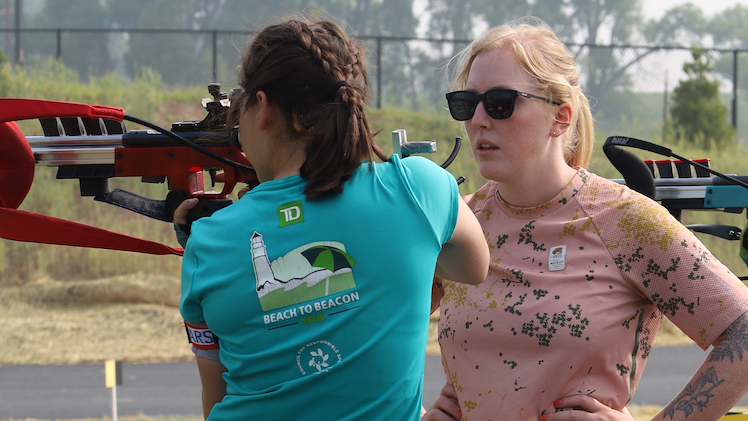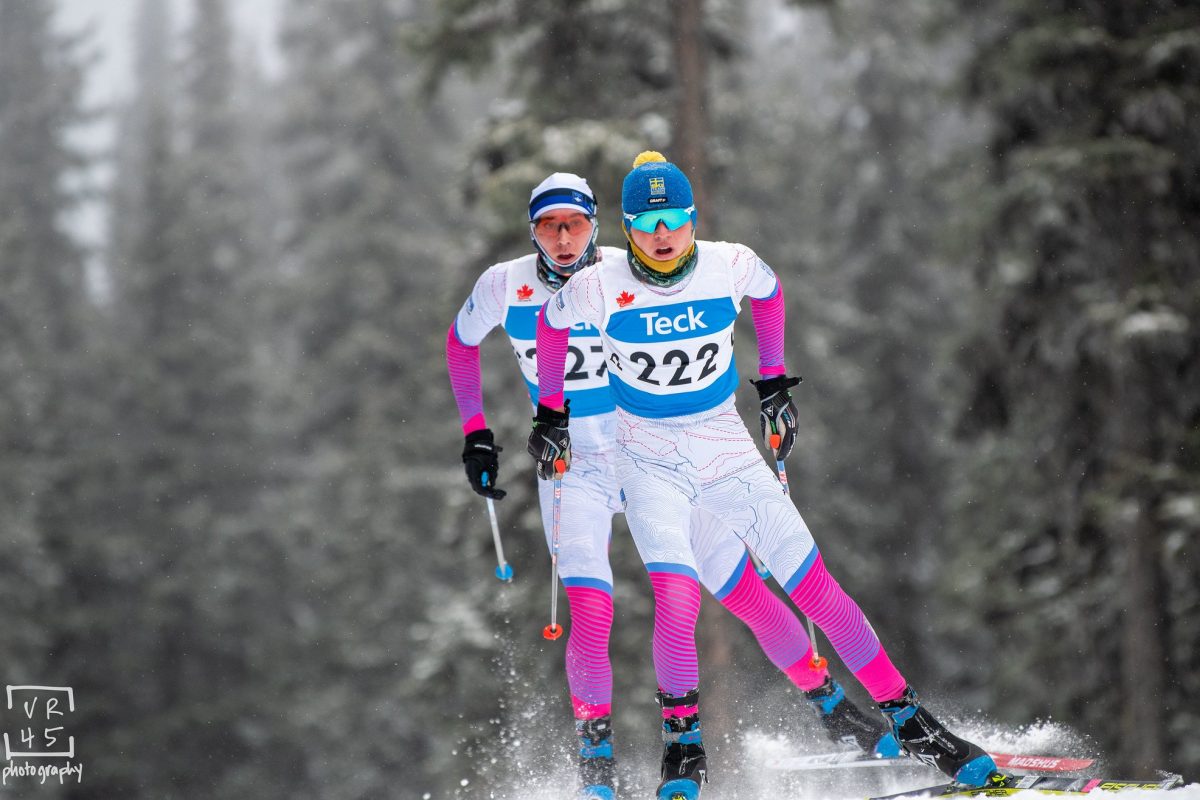
Tim Burke is one of the best biathletes in North America. The Paul Smiths, New York native finished on the World Cup podium three times during the 2009-2010 season, and even donned the yellow overall leader’s bib. But in 2011, he had a disappointing year, with his best finish 18th place in the opening World Cup sprint in Ostersund, Sweden.
In April Burke told FasterSkier that he had been suffering from compartment syndrome, but hadn’t wanted to publicize his injury. That month he underwent surgery to relieve the pressure in his lower legs. Last week, he was in Jericho, Vermont with the rest of the national team, and FasterSkier snagged him for an interview.
FasterSkier: To start out with, how is the recovery going?
Tim Burke: Everything has been super smooth. I’ve had great help from the people at the Olympic Training Center (OTC) in Lake Placid with my rehab, and I’m back to 100 percent now.
FS: This is your first camp back with the team, right?
TB: Yeah, the first camp where I’m actually able to do all the workouts with everyone. I participated a little bit in our May camp, but only for some of the double-pole sessions, that was about it.
FS: So what was your spring like? What were you working on?
TB: Well, I was in rehab for a pretty long time every day, at the OTC in Lake Placid. I was trying to train as much as I could every day through doing things like double pole. We had a really cool treadmill at the OTC too, it’s called an Alter-G, and it allows you to run with whatever percent of your body weight that you want to. So I spent a lot of time on that too. Running pretty early on, but with a really low percent of my body weight.
FS: Wow… I can’t even imagine how that works.
TB: Yeah, it’s like the lower half of your body is sealed into the treadmill and it pumps up with air. It’s all computerized and you just type in your weight, and then you can tell it you want to run with 50 percent of your body weight or whatever. So it’s pretty easy to run but you can still get your heart rate up and get the motion for running going, so that definitely helped me get back on my feet a lot earlier.
FS: Obviously surgery wasn’t a benefit, exactly, but did you see any silver linings to having to take spring a little differently than you usually have?
TB: Yeah. It gave me a good chance to regroup after a tough season and evaluate how everything went, and think about a few changes that need to made, so that when my body was ready I had everything lined up and ready to go.
FS: So if you’re already back on track in July, it seems like you’re set to be able to have a good season next year.
TB: Hopefully. I don’t feel like it’s set me back any. Of course, I haven’t been able to train as many hours as I like to in the springtime, but I’m really not that far behind. I feel like if I can stay healthy from here on out, I should be okay for next season.
FS: Do you feel like after you’ve been training for so many years, and you have such a good base, you have a little more leeway and maybe this isn’t as much of a problem to come back from as it could have been earlier in your career?
TB: I definitely think that will help. I’ve been training at a pretty high level for quite a while. So that’s made it easier for me to transition back into some pretty hard training right away. And I was also really, really careful in the spring to stay in as good shape as I possibly could, and was even watching my diet and things like that so when I was ready to train I would be able to get back into it as soon as possible.
FS: You’re in Jericho right now for a camp, which will also be the site of the North American Rollerski Biathlon Championships. Are you going to compete in that?
TB: Yeah, definitely. We also race here twice this week, tomorrow [Friday] and Saturday, so I’ll do those races and also the races in August.
FS: Do you know whether the Canadians will bring anyone down for those?
TB: I don’t know, I haven’t talked to those guys, but I wouldn’t be surprised if the Quebec group comes down.
FS: Do you see them much in the summer, and is there a benefit in having them around?
TB: Oh yeah, we both benefit from it. They have some really strong guys now, and to be able to race against other people can give it a little bit more of a race-type feel anyway. If you’re racing against a bunch of guys from your team it can feel a little bit more like practice.
FS: What do you think about Pyeong Chang being selected to host the Olympics? You’ve actually raced there, unlike most people in the U.S.
TB: I was honestly pretty disappointed. I haven’t had very many good experiences there. I’ve spent a few weeks there, racing on the World Cup and at World Championships [in 2009]. I had solid races there for myself, personally, but just the experience of racing there was really not great. Both times they struggled with snow conditions and were pretty unprepared for our events. The course there is for us literally on a golf course so it doesn’t ski very well, and it’s also surrounded by windmills, so it’s incredibly windy there. It makes for some challenging biathlon conditions, for sure.
FS: It doesn’t seem like there’s much of a skiing tradition there, so is it going to be kind of a downer to make a trip to the Olympics and then not have as many dedicated fans?
TB: Yeah, for the Olympics I wouldn’t expect them to have large crowds. I’d expect it will be smaller than most of our World Cup competitions, which is for sure disappointing, but at the same time you’re racing for an Olympic medal, so I don’t think anyone will have a problem with motivation.



